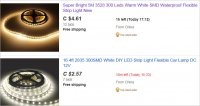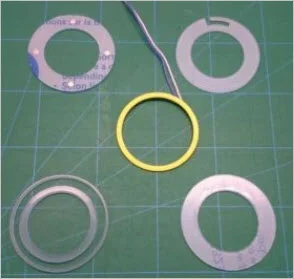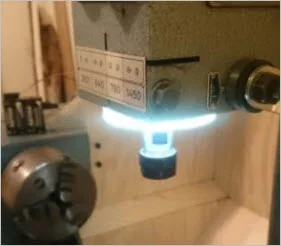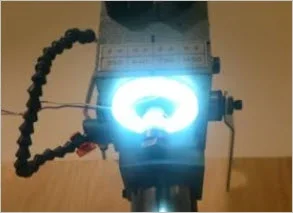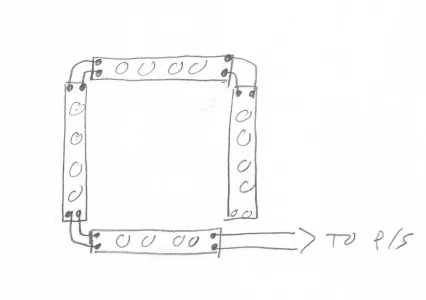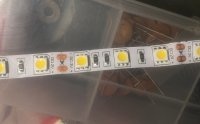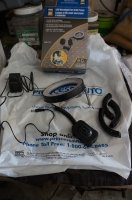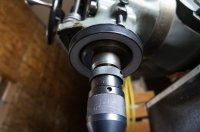Can anyone point me in the right direction. I want to make an LED light for my mill similar to these aftermarket ones. I am tired of fighting with my gooseneck lamp coming in from the side. The magnet dos not hold well on the cast iron & I'm always reaching in the same area to lock the head or touch the DRO. I do like the LED replacement bulb though, it runs cool & I'm not worried about the occasional fling chip or splatter.
I like the idea of a ring that is attached to underside of mill head & lights always pointing down at the work vs side glare in my eyes. But don't need it tied to the spindle housing itself. I was thinking more of a frame that holds LED's, could be circular donut or maybe even 4"x4" square, just attached to underside.
- how do I work with fixed length LED strips like I see them typically sold like 1m or 5m continuous lengths? Can I cut the strip into say 4 segments say 5 LED's per segment to make a square shape mounted on a plastic frame or substrate? Then what, do I solder interconnects to bridge the 90-deg cut corner?
- I have 110v available, what do I need to power the LEDS? I see some kits include DC power adapters but are they sized specifically to the fixed length of LED strip they are packaged with? (ie. no longer suitable for shorter lower LED count?
I like the idea of a ring that is attached to underside of mill head & lights always pointing down at the work vs side glare in my eyes. But don't need it tied to the spindle housing itself. I was thinking more of a frame that holds LED's, could be circular donut or maybe even 4"x4" square, just attached to underside.
- how do I work with fixed length LED strips like I see them typically sold like 1m or 5m continuous lengths? Can I cut the strip into say 4 segments say 5 LED's per segment to make a square shape mounted on a plastic frame or substrate? Then what, do I solder interconnects to bridge the 90-deg cut corner?
- I have 110v available, what do I need to power the LEDS? I see some kits include DC power adapters but are they sized specifically to the fixed length of LED strip they are packaged with? (ie. no longer suitable for shorter lower LED count?

